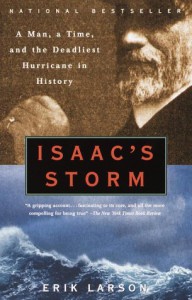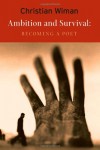Currently reading
The Discarded Image: An Introduction to Medieval and Renaissance Literature (Canto)
Boys and Girls Learn Differently!: A Guide for Teachers and Parents
Ambition and Survival: Becoming a Poet
Deep River: The Life and Music of Robert Shaw
Daring, Trusting Spirit
The Vatican Diaries: A Behind-the-Scenes Look at the Power, Personalities, and Politics at the Heart of the Catholic Church
The Whisperers: Private Life in Stalin's Russia
Isaac's Storm: A Man, a Time, and the Deadliest Hurricane in History
 Strangely enough, I began reading "Isaac's Storm" and "Rising Tide: The Great Mississippi Flood of 1927 and how it changed America" at the same time. Spurred no doubt by the rather feeble hurricane Irene that hit the east coast in August 2011, I got interested in reading about hurricanes and how they came to be named and categorized. Irene was predicted to be this huge mega-storm, but the Galveston Hurricane really WAS the huge megastorm. In fact this year is the 111th anniversary of that disastrous time in Galveston's history. As I mentioned in my review of "Rising Tide", Isaac Cline features prominently in that book as the head of the regional forecasting center in New Orleans. It was fascinating to read more about Cline from his beginnings in Tennessee to his travels to Texas to become eventually the chief forecaster in Galveston, Texas. This book, of course, is about the September 8, 1900 hurricane that devastated Galveston. Weather forecasting at this time was a highly developing area, emerging from the highly superstitious and whimsical to a more reliable scientific approach. Cline was on the cusp of bringing weather forecasting into the scientific approach. The Galveston Hurricane stands as the greatest natural disaster by number of deaths in US history -- 8,000 people were killed, perhaps as many as 12,000. Of those, 6,000 died in Galveston alone. These numbers are higher than COMBINING the casualties from the Johnstown Flood, the San Francisco Earthquake, the 1938 New England hurricane, and the Great Chicago fire. Using the modern Saffir-Simpson system, the Galveston Hurricane was a Category 4. By way of contrast, by the time Hurricane Irene hit the US Coast in August of 2011, it was only a category 1. This book was worthwhile to read, and a wakeup call to remember the past and study history especially as a way to contrast with events todaoy. It is also a reminder that 111 years ago weather forecasting was a new and emerging field. It is now a more developed field, and weather forecasters still cannot totally predict what a hurricane will do, or what it will not do.
Strangely enough, I began reading "Isaac's Storm" and "Rising Tide: The Great Mississippi Flood of 1927 and how it changed America" at the same time. Spurred no doubt by the rather feeble hurricane Irene that hit the east coast in August 2011, I got interested in reading about hurricanes and how they came to be named and categorized. Irene was predicted to be this huge mega-storm, but the Galveston Hurricane really WAS the huge megastorm. In fact this year is the 111th anniversary of that disastrous time in Galveston's history. As I mentioned in my review of "Rising Tide", Isaac Cline features prominently in that book as the head of the regional forecasting center in New Orleans. It was fascinating to read more about Cline from his beginnings in Tennessee to his travels to Texas to become eventually the chief forecaster in Galveston, Texas. This book, of course, is about the September 8, 1900 hurricane that devastated Galveston. Weather forecasting at this time was a highly developing area, emerging from the highly superstitious and whimsical to a more reliable scientific approach. Cline was on the cusp of bringing weather forecasting into the scientific approach. The Galveston Hurricane stands as the greatest natural disaster by number of deaths in US history -- 8,000 people were killed, perhaps as many as 12,000. Of those, 6,000 died in Galveston alone. These numbers are higher than COMBINING the casualties from the Johnstown Flood, the San Francisco Earthquake, the 1938 New England hurricane, and the Great Chicago fire. Using the modern Saffir-Simpson system, the Galveston Hurricane was a Category 4. By way of contrast, by the time Hurricane Irene hit the US Coast in August of 2011, it was only a category 1. This book was worthwhile to read, and a wakeup call to remember the past and study history especially as a way to contrast with events todaoy. It is also a reminder that 111 years ago weather forecasting was a new and emerging field. It is now a more developed field, and weather forecasters still cannot totally predict what a hurricane will do, or what it will not do.










